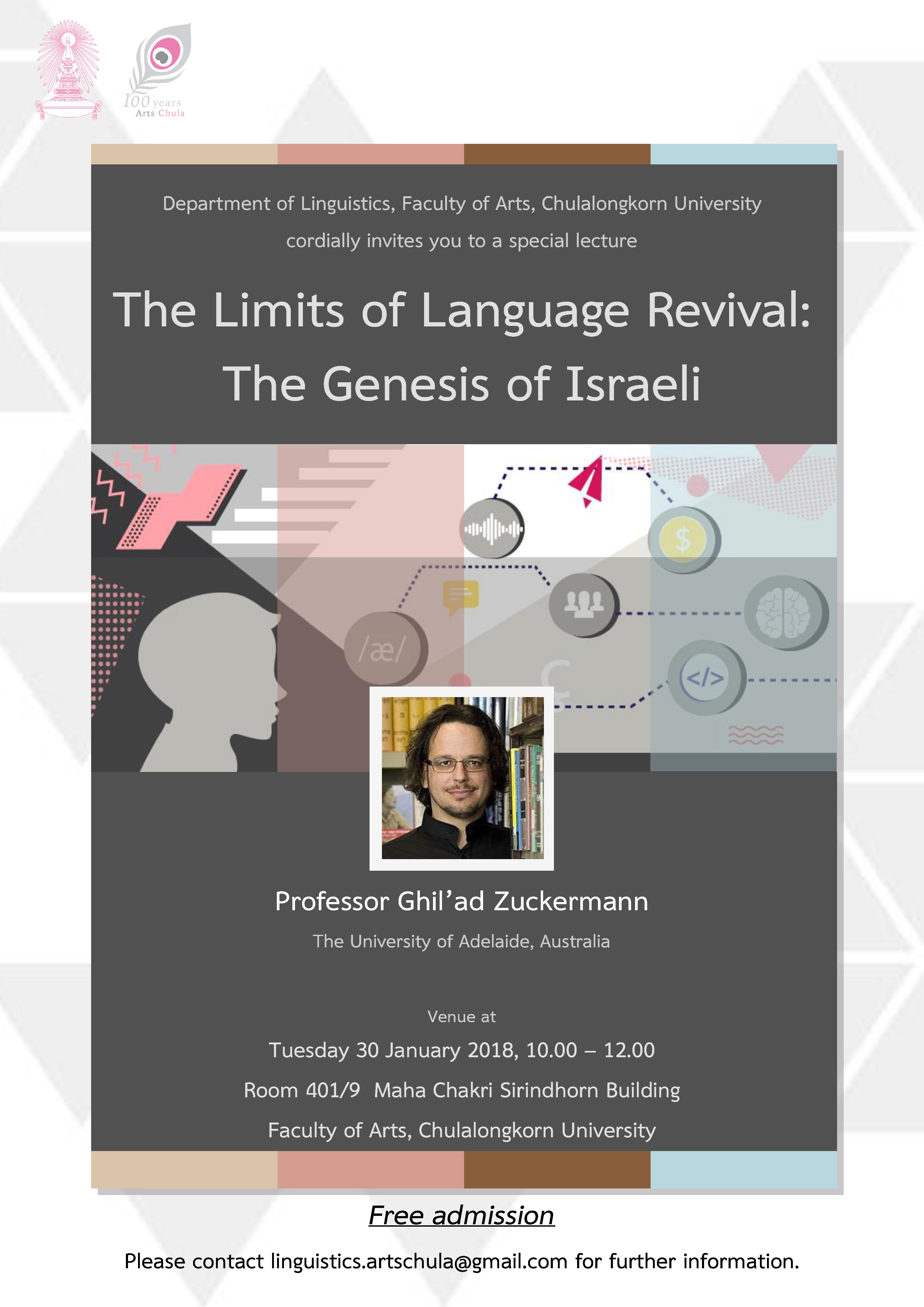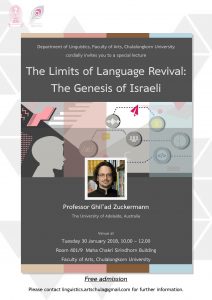
The Department of Linguistics, Faculty of Arts, Chulalongkorn University cordially invites you to a special lecture:

“The Limits of Language Revival: The Genesis of Israeli” by Ghil’ad Zuckermann (The University of Adelaide, Australia)
Date: January 30, 2018 at 10.00-12.00
Venue: 401/9 Maha Chakri Sirindhorn Building, Faculty of Arts, Chulalongkorn University
Abstract:
This lecture will examine whether it is possible to reclaim a sleeping beauty language, and specifically whether Hebrew has been revived (without changing its linguistic nature). A language is an abstract ensemble of idiolects – as well as sociolects, dialects etc. – rather than an entity per se. Still, the genetics of Israei linguists (a.k.a “Modern Hebrew”) has preoccupied scholars since the beginning of the twentieth century. The traditional thesis suggests that it is Semitic: (Biblical/Mishnaic) Hebrew reclaimed. Educators, scholars and politicians have propagated this view. The revisionist antithesis defines Israeli as Indo-European: Yiddish relexified, i.e. Yiddish, most revivalists’ mother tongue, is the ‘substratum’, whilst Hebrew is only a ‘superstratum’ providing lexicon and frozen morphology. As opposed to these mono-parental models, this lecture will present Professor Ghil’ad Zuckermann’s synthesis, according to which Israeli, a young language which is 120 years old, is simultaneously Semitic and (Indo-) European: Both Hebrew and Yiddish(the revivalists’ mother tongue) act as its ”primary contributors”, with numerous other contributors such as Russian and Polish. Thus, the term “Israeli” is far more appropriate than the misleading “Israeli Hebrew”, let alone “Modern Hebrew”
or “Hebrew” tout court.

